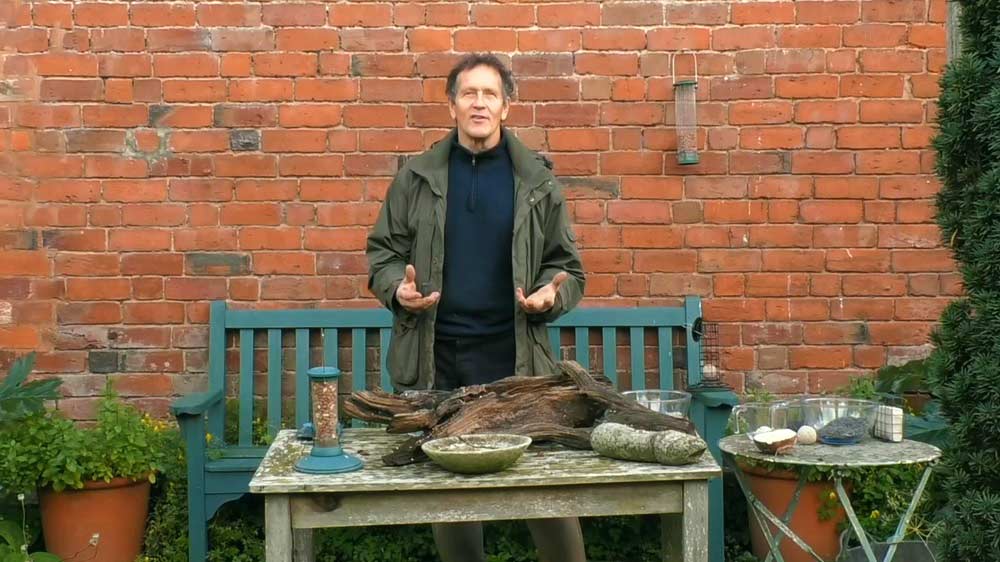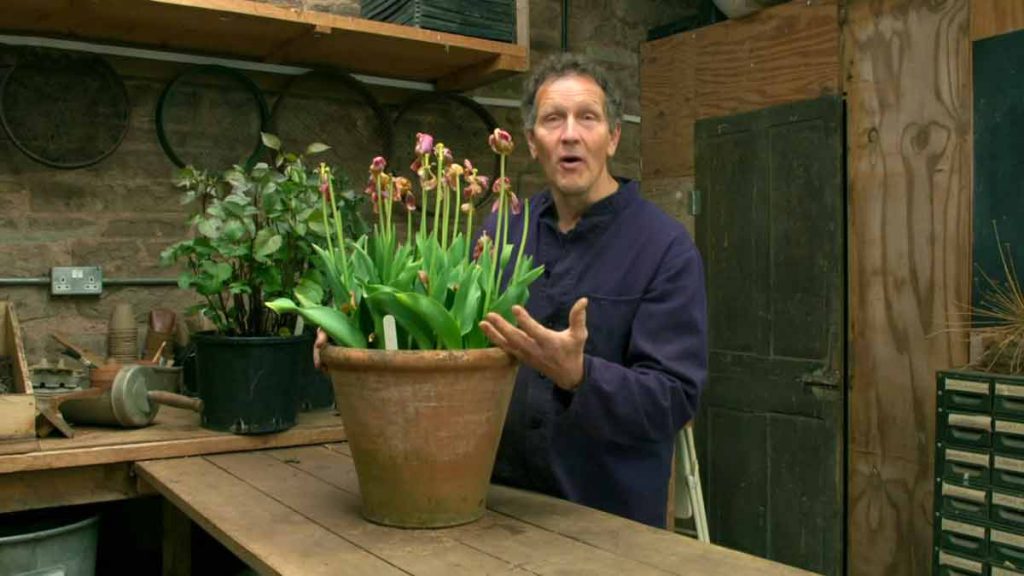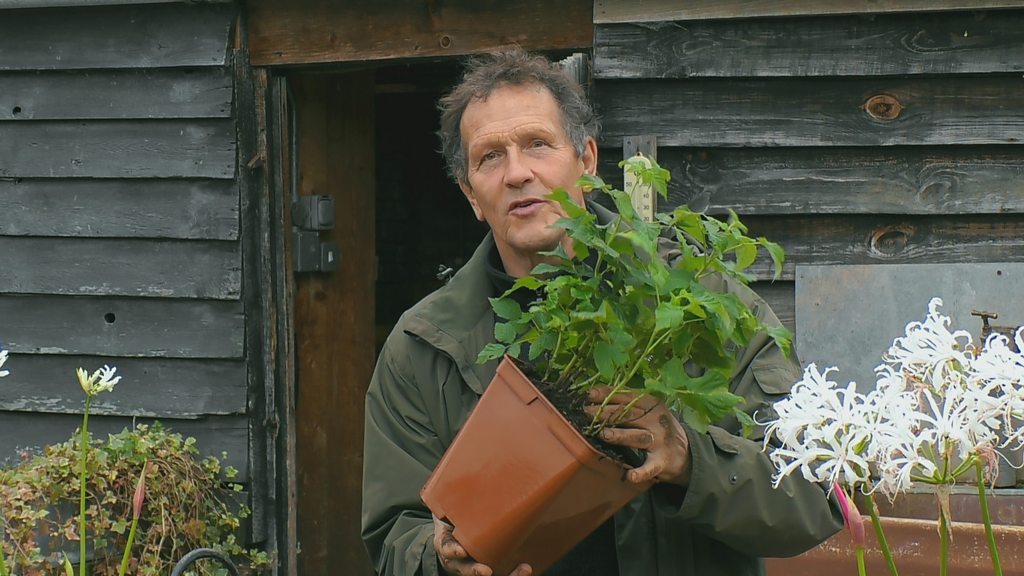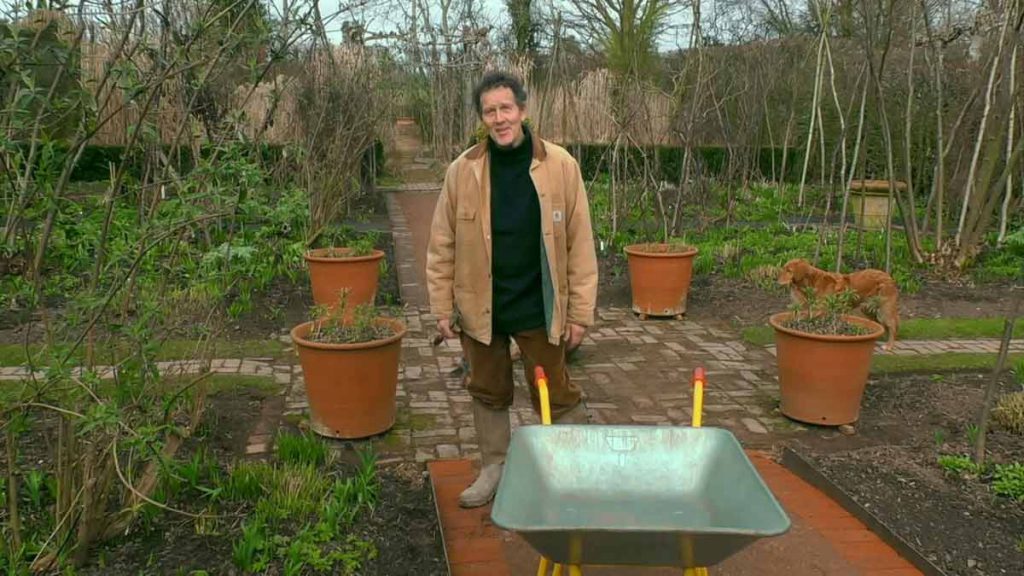Gardeners’ World 2021 Winter Specials episode 1: Monty and the Gardeners’ World team look back at the highs of the latest series.
In the first of two special programmes, Monty and the Gardeners’ World team look back at the horticultural highs of the latest series and celebrate the very best inspirational gardens and gardeners up and down the country. There’s also another chance to see what viewers were getting up to in their gardens throughout the year when they shared their own home videos.
Gardeners’ World 2021 Winter Specials episode 1
Grow your own sweetcorn
Sweetcorn is delicious eaten simply with a knob of butter, fresh from the garden. Plants also make a useful windbreak and are an ornamental feature with their height and tassels. Now new selections make sweetcorn growing easier in the UK.
Sweetcorn is most successful in long hot summers, though many modern cultivars are better suited to our cooler climate. ‘Supersweet’ cultivars are much sweeter than older varieties and retain their sweetness for longer, but they are less vigorous. It is best not to grow these Supersweet types next to other types as cross pollination can result in poor flavour. Alternatively, ‘Extra Tendersweet’ corn which is almost as sweet and less chewy.
Sow indoors at 18-21°C (65-70°F) from mid-April to early May in modules or deep pots at a depth of 2.5cm (1in). For an extended cropping season, try early, mid season and late cultivars sown at the same time or sow your one early cultivar another two times, 3 weeks apart. In colder regions, early cultivars will do best.
Hydrangea pruning
Shrubs like hydrangeas flower from mid to late summer on the previous year’s growth. Mophead and lacecap hydrangeas will bloom satisfactorily with little attention, but regular pruning encourages new, vigorous growth that can produce a better display. Likewise, other species, including the climbing hydrangea, will benefit from a trim.
The pruning methods explained below are for individual types and species of hydrangea. The most commonly grown hydrangeas in gardens are lacecaps and mopheads – mopheads are identified by their full, roundish heads of large petals; lacecaps have tiny flowers in the centre of the bloom and an outer border of large petals.
Tulips
Tulips are amongst the most popular of bulbs, valued for their brilliant flower colours and shapes. Plant in autumn for a show of spring flowers. Choose from a large range to suit the situation. Whether used in formal or informal beds and borders, tulips make ideal bedding plants combined with annual or biennial planting. Tulips can also be useful for containers, and some varieties can be naturalised in grass.
Tulips grow best in fertile, well-drained soil in full sun, sheltered from strong winds. All dislike excessively wet conditions; this is particularly true with alpine species which require excellent drainage. Exceptions include Tulipa sprengeri, T. sylvestris and T. tarda which prefer a more moisture-retentive soil with partial shade.
Incorporate organic matter into the soil before planting to improve both clay and sandy soils, making them much more suitable for tulips. Coarse gravel can also help improve growing in clay soils. Apply Growmore or chicken manure pellets (70g per sq m or 2oz per sq yd) before planting to help nutrient-poor soils.
A neutral to alkaline soil is preferred. Soils with a pH lower than 6.5 may need applications of lime.
Gardeners’ World 2021
Gardeners’ World is a long-running BBC Television programme about gardening, first broadcast on 5 January 1968 and still running as of 2019. Its first episode was presented by Ken Burras and came from Oxford Botanical Gardens. The magazine BBC Gardeners’ World is a tie-in to the programme. Most of its episodes have been 30 minutes in length, although there are many specials that last longer. The 2008 and 2009 series used a 60-minute format as did the 2016 series from episode 23, for eight episodes in total.
Monty Don
Monty Don was born in West Berlin to British parents Denis Thomas Keiller Don, a career soldier posted in Germany, and Janet Montagu (née Wyatt). Both of his paternal grandparents were Scottish, through whom he is descended from botanist George Don and the Keiller family of Dundee, inventors of a brand of marmalade in 1797. On his maternal side, he is descended from the Wyatts, who were a prominent dynasty of architects. Both parents died in the 1980s. Don has a twin sister, an elder brother David, and two other siblings. His twin suffered a broken neck and blindness after a car crash, at the age of 19. Don describes his parents as being “very strict”.
Don was educated at three independent schools: Quidhampton School in Basingstoke, Hampshire, Bigshotte School in Wokingham, Berkshire, and at Malvern College in Malvern, Worcestershire, a college he hated. He then attended a state comprehensive school, the Vyne School, in Hampshire. He failed his A levels and while studying for re-takes at night school, worked on a building site and a pig farm by day. During his childhood he had become an avid gardener and farmer. He was determined to go to Cambridge out of “sheer bloody-mindedness”, attending Magdalene College, where he read English and met his future wife Sarah. He was a Cambridge Half Blue for boxing.




